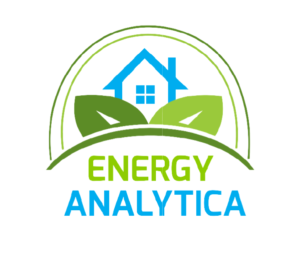Most heating and cooling equipment installed in new California homes is regulated by the
National Appliance Efficiency Conservation Act (NAECA) and/or the California Appliance
Efficiency Regulations (Title 20). Both the federal and state appliance standards apply to the
manufacturing of new equipment and are applicable for equipment used in replacements,
repairs, or for any other purpose.
Equipment that does not meet the federal appliance efficiency standards may not be sold in
California. Any equipment covered by the Appliance Efficiency Regulations and sold in
California must have the date of manufacture permanently displayed in an accessible place
on that equipment. This date is frequently included as part of the serial number.
Commonly used Heating and Cooling equipment are:
- Gas and Oil-Fired Furnaces
- Heat Pumps
- Gas- and Oil-Fired Central Boilers and Electric Boilers
- Single Phase Air Conditioners
- Electric Resistance Heating
Apart from above mentioned system types Title 24 also allows home owners to install following systems.These systems are often more energy efficient but not commonly used. A detail description is provided below for each of one of them.
Hydronic Heating Systems
A hydronic heating system consists of a heat source, which is either a boiler or water heater,
and a distribution system. There are three main types of hydronic distribution systems, and
they may be used individually or in combination: baseboard convectors or radiators, hot
water air handlers, and radiant panel heating systems.
Radiant Floor System
Radiant floor heating system can be either hydronic or electric system. It must meet mandatory insulation measures. Radiant floors may take one of
several forms. Tubing or electric elements for radiant floor systems may be:
1. Embedded in a concrete floor slab.
2. Installed over the top of a wood subfloor and covered with a concrete topping.
3. Installed over the top of wood subfloor in between wood furring strips.
4. Installed on the underside surface of wood subfloor
Evaporative Cooling
Evaporative coolers cool a building by either passing outdoor air through a wetted
evaporative medium (direct evaporative cooler), by indirect cooling through a nonporous
heat exchanger separating evaporatively cooled secondary air from outdoor air, or by a
combination indirect-direct system that combines an indirect heat exchanger with a
downstream direct evaporative process. Although direct coolers are the most common
systems available, the more advanced indirect and indirect-direct systems offer generally
lower supply air temperatures with less moisture introduced to the indoor space. For the
Energy Standards, performance credit is allowed only for indirect and indirect-direct
evaporative cooling systems.
Ground-Source Heat Pumps
A geothermal or ground-source heat pump uses the earth as a source of energy for heating
and as a heat sink for energy when cooling. Some systems pump water from an aquifer in
the ground and return the water to the ground after exchanging heat with the water. A few
systems use refrigerant directly in a loop of piping buried in the ground. Those heat pumps
that either use a water loop or pump water from an aquifer have efficiency test methods that
are accepted by the Energy Commission.
Whole-House Fans
Whole-house fans operate most effectively at cooling a space when windows throughout the
house are opened to a limited extent to ensure fairly uniform airflow throughout the dwelling.
This results in the greatest interaction of the cool air with the interior mass throughout the
dwelling, providing the greatest amount of stored cooling. Running the fan all night long is
most effective at fully “charging” the thermal mass. Noise can be reduced somewhat through
either use of a variable-speed control or installation of a multispeed fan, allowing low-speed
nighttime operation.
Heating System Controls
All unitary heating systems, including heat pumps, must be controlled by a setback
thermostat. These thermostats must be capable of allowing the occupant to program
temperature set points for at least four periods within a 24 hour time span.
If the heating system is integrated into a central energy management control system
(EMCS), then that system does not need to comply with the setback requirements.
Furthermore, all gravity gas wall heaters, floor heaters, room heaters, fireplaces, decorative
gas appliances, wood stoves, and noncentral electric heaters are not required to be
controlled by a setback thermostat.
Any heat pump with supplementary electric resistance heating requires controls with two
capabilities to limit the electric resistance heating. The first required capability is to set the
cut-on and cut-off temperatures for the heat pump and supplementary electric resistance
heating at different levels.
The second control capability prevents the supplementary electric resistance heater from
operating when the heat pump alone can meet the heating load, except during defrost.
There is a limited exception to this second function for “smart thermostats” that provide the
following: intelligent recovery, staging, ramping, or another control mechanism that prevents
the unnecessary operation of supplementary electric resistance heating when the heat pump
alone can meet the heating load.
Equipment Sizing
The Energy Standards do not set limits on the sizing of heating equipment, but they do
require that heating loads be calculated for new heating systems. Oversized equipment
typically operates less efficiently and can create comfort problems due to excessive cycling
and high airflow.
Similar to heating equipment, the Energy Standards do not set limits on the size of cooling
equipment, but they do require that cooling loads be calculated for new cooling systems.
Avoid oversizing the cooling components since oversizing may adversely affect the
efficiency of the system. Ducts must be sized correctly, otherwise the system airflow rate
may be restricted, adversely affecting the efficiency of the system and preventing the system
from meeting the mandatory minimum airflow rate requirements.
Pipe Insulation
The piping for heat pumps and for both steam and hydronic heating systems shall meet the
insulation requirements prescribed by Title 24.When the insulation is located outside
conditioned space, it requires protection from damage caused by environmental conditions.
The insulation must be rated for outdoor use or covered with a material that can withstand
the outdoor conditions. Examples of these types of coverings are aluminum, sheet metal,
painted canvas, plastic cover, or, if the insulation is cellular foam, a coating that is waterretardant and shields from solar radiation. Moreover, the insulation used for the refrigerantsuction line of a heat pump must be Class I or Class II vapor retardant
Minimum System Airflow
Ducted forced air systems must comply with the minimum system airflow rate of greater than
or equal to 350 cfm per ton when performing the refrigerant charge verification. The airflow
is important when performing the refrigerant charge verification to validate the measured
values for pressure and temperature. The correct airflow will also improve the performance
of the air-conditioning equipment.
Refrigerant Charge Verification (RCV)
Refrigerant charge refers to the actual amount of refrigerant present in the system.
Excessive refrigerant charge (overcharge) reduces system efficiency and can lead to
premature compressor failure. Insufficient refrigerant charge (undercharge) also reduces
system efficiency and can cause compressors to overheat. Ensuring correct refrigerant
charge can significantly improve the performance of air-conditioning equipment. Refrigerants
are the working fluids in air-conditioning and heat-pump systems that absorb heat energy
from one area (the evaporator), transfer, and reject it to another (the condenser).
Fault Indicator Display
The installation of a fault indicator display (FID) may be used as an alternative to the
prescriptive requirement for HERS diagnostic testing of the refrigerant charge in air
conditioners and heat pumps. The installation of a FID does not preclude the HVAC installer
from having to properly charge the system with refrigerant. The FID provides real-time
information to the building occupant about the status of the system refrigerant charge,
metering device, and system airflow. The FID will monitor and determine the operating
performance of air conditioners and heat pumps and provide visual indication to the system
owner or operator if the refrigerant charge, airflow, or metering device performance of the
system does not conform to approved target parameters for minimally efficient operation. A FID can also indicate system performance faults thatcould result in system component damage or failure if not corrected, thus helping theowner/occupant avoid unnecessary repair costs.
Thermostats
Automatic setback thermostats can add comfort and convenience to a home. Occupants can
wake up to a warm house in the winter and come home to a cool house in the summer
without using unnecessary energy.
A thermostat is always required for central systems whether the prescriptive or performance
compliance method is used. An exception is allowed only if:
1. The building complies using a computer performance approach with a non-setback
thermostat.
2. The system is one of the following noncentral types:
a. Noncentral electric heaters.
b. Room air conditioners.
c. Room air conditioner heat pumps.
d. Gravity gas wall heaters.
e. Gravity floor heaters.
f. Gravity room heaters.
g. Wood stoves.
h. Fireplace or decorative gas appliances.
When it is required, the setback thermostat must have a clock or other mechanism that
allows the building occupant to schedule the heating and/or cooling set points for at least
four periods over 24 hours.
If more than one piece of heating equipment is installed in a residence or dwelling unit, the
setback requirement may be met by controlling all heating units by one thermostat or by
controlling each unit with a separate thermostat. Separate heating units may be provided
with a separate on/off control capable of overriding the thermostat.
Thermostats for heat pumps must be “smart thermostats” that minimize the use of
supplementary electric resistance heating during startup and recovery from setback.
Zonal Control
An energy compliance credit is provided for zoned heating systems, which save energy by
providing selective conditioning for only the occupied areas of a house. A house having at
least two zones (living and sleeping) may qualify for this compliance credit. The equipment
may consist of one heating system for the living areas and another system for sleeping
areas or a single system with zoning capabilities, set to turn off the sleeping areas in the
daytime and the living area unit at night.
There are unique eligibility and installation requirements for zonal control to qualify under the
Energy Standards. The following steps must be taken for the building to show compliance
with the standards under this exceptional method:
1. Temperature Sensors. Each thermal zone, including a living zone and a sleeping
zone, must have individual air temperature sensors that provide accurate temperature
readings of the typical condition in that zone.
2. Habitable Rooms. For systems using central forced air or hydronic heating, each
habitable room in each zone must have a source of space heating, such as forced air
supply registers, radiant tubing, or a radiator. For systems using a combination of a
central system and a gas vented fireplace or other individual conditioning units, the
zone served by the individual conditioning unit can be limited to a single room.
Bathrooms, laundry, halls and/or dressing rooms are not habitable rooms.
3. Non-Closeable Openings. The total non-closeable opening area between
adjacent living and sleeping thermal zones (such as halls, stairwells, and other
openings) must be less than or equal to 40 ft². All remaining zonal boundary areas
must be separated by permanent floor-to-ceiling walls and/or fully solid, operable
doors capable of restricting free air movement when closed.
- Thermostats. Each zone must be controlled by a central automatic dual-setback
thermostat that can control the conditioning equipment and maintain preset
temperatures for varying periods in each zone independent of the other. Thermostats
controlling vented gas fireplace heaters that are not permanently mounted to a wall
are acceptable as long as they have the dual-setback capabilities.
(Excerpted from CEC Title-24 Part 6 Residential Compliance Manual)




